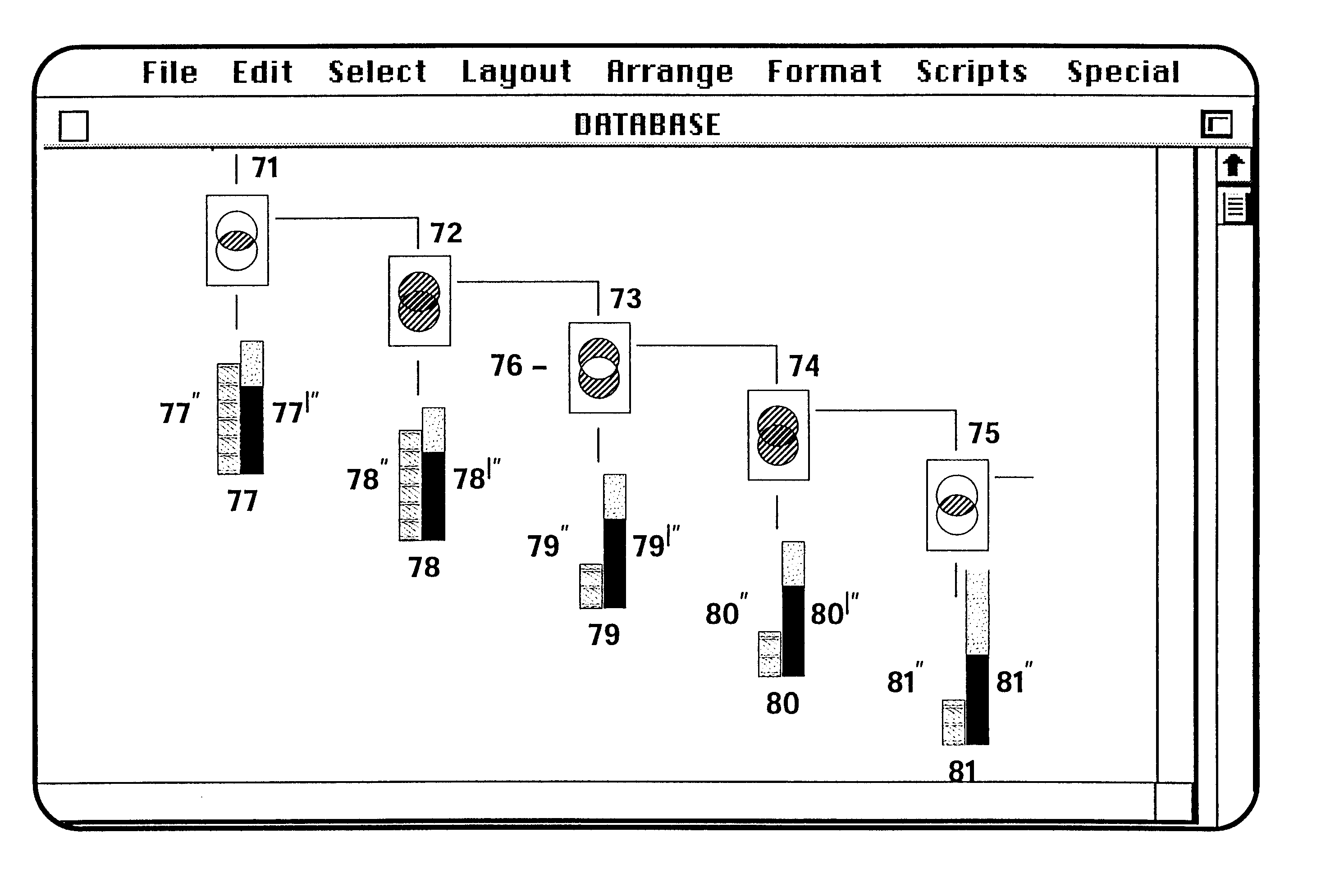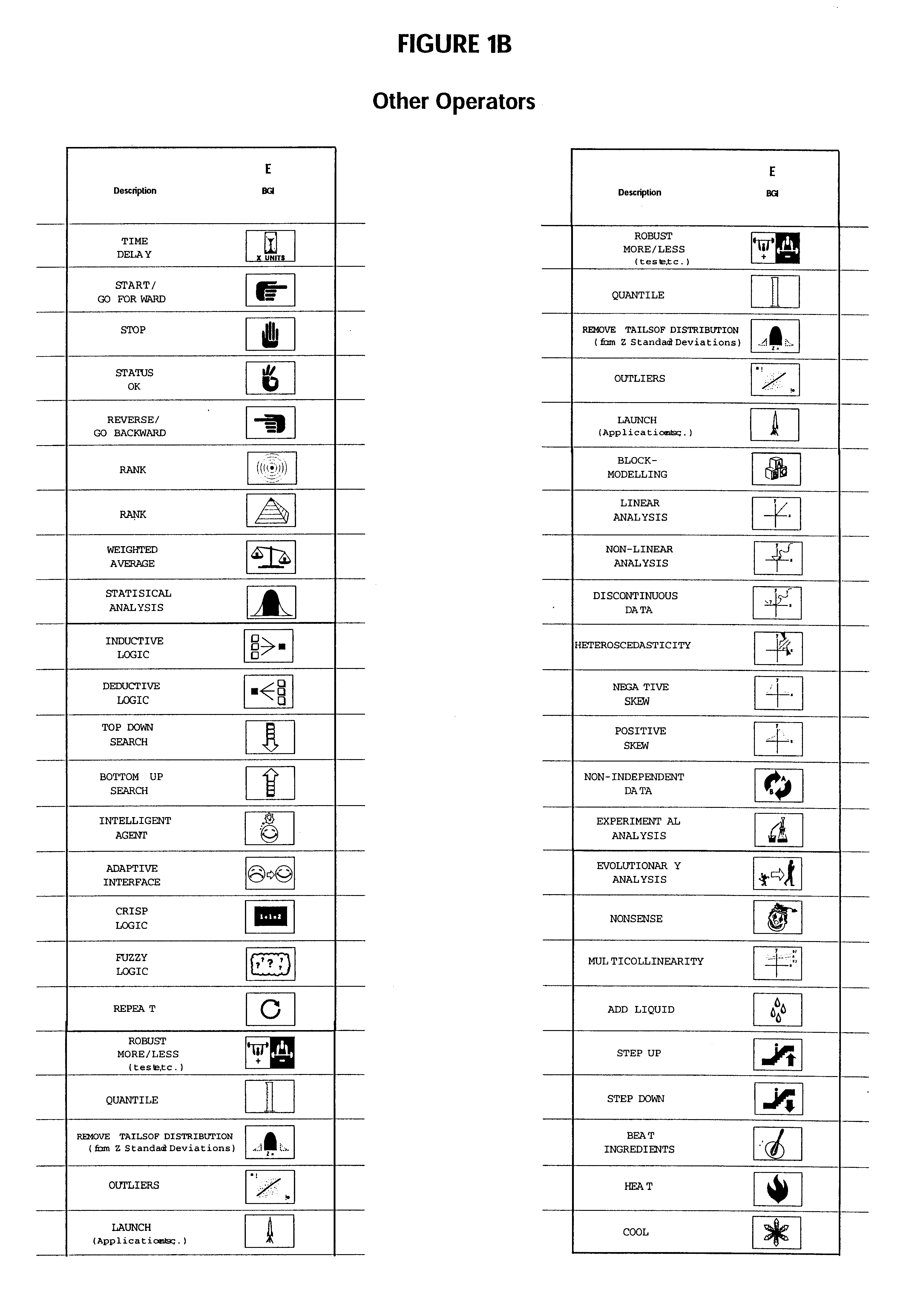In general, however, the user does not operate to modify the icon itself with a corresponding function executed by the
operating system or application.
These systems do not, however, provide a generic icon which is modified to reflect a data subset employed.
However, it is not well known in the art of front ends for search engines or browsers to use well-articulated graphical representations of set theory, including graphical representations of the
logical operations "AND", "OR" and "NOT," and any symbols that are used tend to be static and non-manipulable.
Thus, this system allows the user to visualize the element of the search in a graphical representation, but does not graphically represent the chaining of search criteria.
This system does not provide for interactive modification of the search based on the graphic representation.
Thus, while AND, OR and NOT are readily understood, a complex expression employing such words may become incomprehensible.
(1) proliferation of results, which are extremely
time consuming or impossible to consider in their totality; and alternatively a paucity of results;
(2) aggregation of data results, in many cases, in one undifferentiated
pile;
(3) loss of the logical history of a search, and the corresponding hot links, requiring reentering and researching of requests in some cases;
(4) lack of an intuitively appealing graphic representation either of a projected search or the results thereof,
(5) lack of an intuitively appealing graphic interface for interaction with an "
intelligent agent";
(6) lack of a suitable graphic interface for manipulation of index and table of contents data;
(7) lack of a suitable graphic interface to
handle a search of two or more databases simultaneously;
(8) lack of a suitable graphic interface for handling complex data searches involving
fuzzy logic; and
(9) lack of an intuitively appealing interface to represent the results of a
database search.
(10) Lack of a graphic interface for search processes that is universally understandable, regardless of one's
natural language.
Typically, a user will seek to use the database system to help define an optimal resulting data subset, wherein the rule or rules defining that
data set are unknown at the outset or are inefficiently defined as a single consolidated set of rules.
In other cases, traditional Boolean logical expressions cannot readily represent the search concept, such as a proximity of two terms.
In some instances, a portion of the database may be readily accessible, and a portion difficult to access, and these search requests may be scheduled and / or dispatched accordingly.
Of course, there are instances where this information will be unavailable to the interface prior to execution of a search, in which case the interface will perform its normal functions, even with these trivializations.
Using unitary Venn diagrams, more complex logic is less easily represented, i.e., while such representations are possible, they may require display systems with greater than two dimensions for greater than three sets.
On the other hand, the surrogate criteria, estimations, cutoffs and simplifying assumptions often lead to errors, i.e., loss of significant set members or inclusion or erroneous set members, or both.
Sometimes, multiple underinclusive set definitions are used to define the concept, either because the search tools do not allow a single criterion of sufficient breadth, or because such a single criterion would result in the inclusion of a high proportion of undesired set elements without a corresponding increase in desired set elements.
While a user might also directly indicate the desired metric, often, the data does not have a
linear distribution or other simple distribution.
In some instances, this is impossible, for example where the represented set inclusion criteria do not include any continuous or stepwise continuous formulation.
Thus, while such systems have certain limitations, they provide additional tools and opportunities for
ranking of references.
In this case, institution information may be less reliable however,
domain name may be useful information.
 Login to View More
Login to View More  Login to View More
Login to View More 


